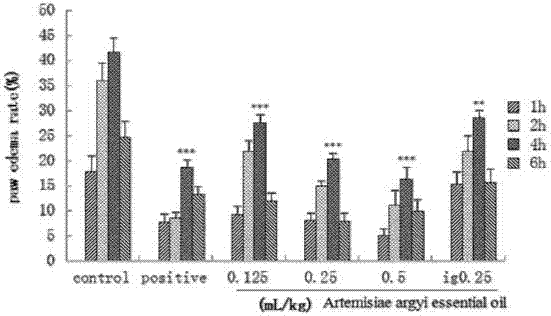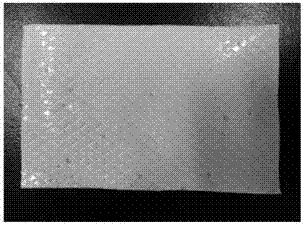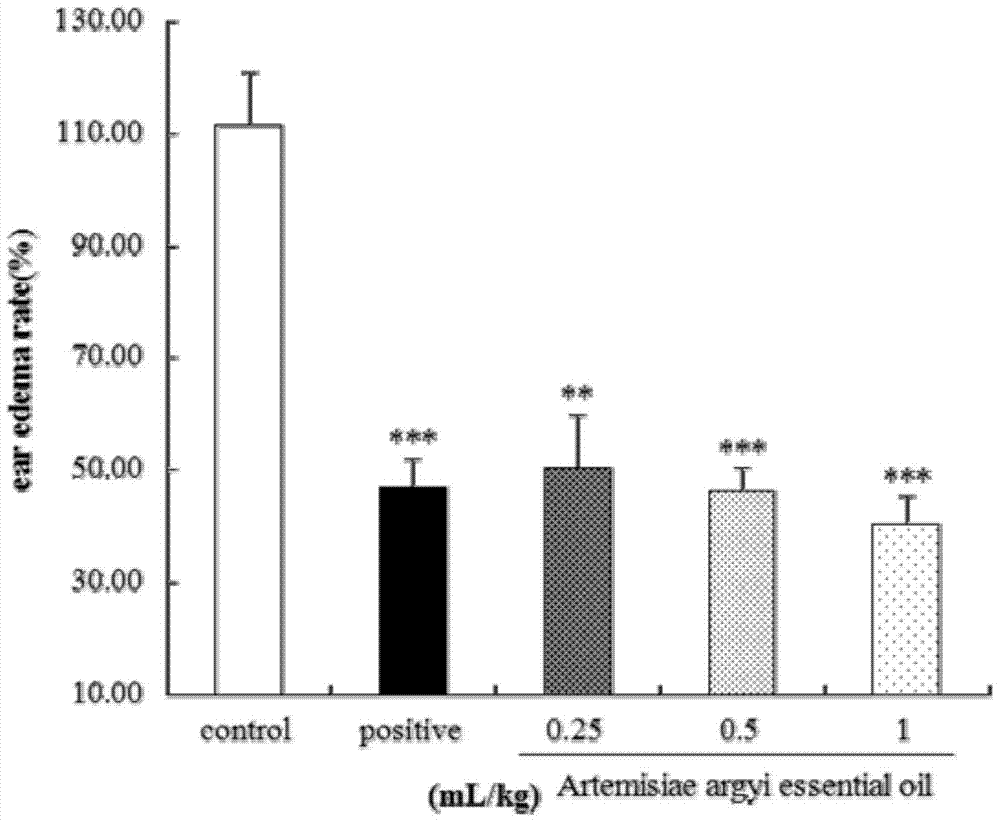Artemisia argyi leaf oil transdermal patch, preparation method and detection method for active ingredients in the patch
A technology of transdermal patch and mugwort leaf oil, which is applied in the field of mugwort leaf oil transdermal patch, can solve the problems of affecting drug efficacy, poor adhesion, cohesion and permeability, and achieve significant dose-dependent anti-inflammatory and The effect of promoting blood circulation and removing blood stasis, high accuracy and excellent effect
- Summary
- Abstract
- Description
- Claims
- Application Information
AI Technical Summary
Problems solved by technology
Method used
Image
Examples
Embodiment 1
[0029] Example 1 Preparation of mugwort leaf oil transdermal patch
[0030] Add 0.4 parts of glyoxate and 0.09 parts of ethylenediaminetetraacetic acid sodium salt into 40 parts of propylene glycol and stir to disperse, then add 8 parts of sodium polyacrylate NP-7000, and stir evenly to form a humectant phase; mix 10 parts of mugwort leaf oil with Tween 4 Mix evenly, then add ultrapure water equal to the volume of mugwort leaf oil to emulsify, add water to dilute to the required amount, add 6 parts of kaolin and 3 parts of gelatin in turn, stir and mix well, as the water phase; slowly add the water phase Stir and mix the humectant phase to obtain a colloid, which is coated on a clean non-woven fabric, covered with a protective film, left to cure for 12 hours, and a mugwort leaf oil transdermal patch is obtained.
Embodiment 2
[0031] Example 2 Preparation and prescription optimization of mugwort leaf oil transdermal patch (single factor investigation test)
[0032] 1. Prescription composition
[0033] The test prescription of this embodiment is divided into 7 groups: basic group: humectant (glycerin), filler (kaolin), patch skeleton (NP-700), cross-linking regulator (EDTA-2Na), cross-linking agent (glycolic acid The matrix weight percent of aluminum), tackifier (PVP-K90), pH regulator (tartaric acid) is 30%: 5%: 5%: 0.05%: 0.3%: 2%: 0.2%.
[0034] Moisturizer (glycerol), filler (kaolin), patch skeleton (NP-700), cross-linking regulator (EDTA-2Na), cross-linking agent (aluminum glycerol), tackifier (PVP-K90) And the matrix content of the pH regulator (tartaric acid) is a variable, and the proportion of the matrix content of other auxiliary materials of the patch is constant, and the prescription matrix sample is prepared.
[0035]2. Preparation process: Disperse the prescribed amount of aluminum gl...
Embodiment 3
[0047] Example 3 Preparation and prescription optimization of mugwort leaf oil transdermal patch (orthogonal test of four factors and three levels)
[0048] (1) See Table 2 for the level table
[0049] Table 2 Factor level table
[0050]
[0051] (2) Prescription composition: Except for the above-mentioned four level factors, other matrix components are based on the basic group in Example 2, and are combined according to Table 3 matrix.
[0052] (3) Preparation process: with embodiment 2.
[0053] (4) Orthogonal experiment result and analysis: see table 3, table 4 and table 5, the result proves, the optimum combination of four factors of this orthogonal experiment is: A 2 B 2 C 2 D. 1 Namely glycerin 30%, NP-7005%, aluminum glycylate 0.3%, EDTA 0.03%. Through single factor experiment and orthogonal experiment, the dosage of excipients for optimal prescription was finally determined to be moisturizing agent glycerin 30%, hydrogel patch skeleton sodium polyacrylate NP-7...
PUM
 Login to View More
Login to View More Abstract
Description
Claims
Application Information
 Login to View More
Login to View More - R&D
- Intellectual Property
- Life Sciences
- Materials
- Tech Scout
- Unparalleled Data Quality
- Higher Quality Content
- 60% Fewer Hallucinations
Browse by: Latest US Patents, China's latest patents, Technical Efficacy Thesaurus, Application Domain, Technology Topic, Popular Technical Reports.
© 2025 PatSnap. All rights reserved.Legal|Privacy policy|Modern Slavery Act Transparency Statement|Sitemap|About US| Contact US: help@patsnap.com



